Product pictures
| Amount Per 0.1089 cup | |||
| Calories | 140 Kcal (586 kJ) | ||
| Calories from fat | 36 Kcal | ||
| % Daily Value* | |||
| Total Fat | 4g | 6% | |
|---|---|---|---|
| Sodium | 200mg | 8% | |
| Total Carbs | 21g | 7% | |
| Sugars | 17g | 68% | |
| Dietary Fiber | 4g | 16% | |
| Protein | 6g | 12% | |
| Iron | 0.9mg | 5% | |
* Percent Daily Values are based on a 2000 calorie diet. Your daily values may be higher or lower depending on your calorie needs.
Find out how many calories should you eat.
Ingredients And Nutrition Overview
Best
choice Good
choice Poor
choice Avoid
it!
choice Good
choice Poor
choice Avoid
it!
-
WeightWatchers Points: 2.3, PointsPlus: 4, SmartPoints: 6
WeightWatchers Points are estimated by carbohydrates, fats, protein and fiber in product. They are not an affirmation of better quality or nutritional value of the product or its manufacturer. Only way to count for dieters. Less points are better.
Read more at Weight watchers diet review -
Contains controversial artificial colors
Once upon a time, there were no food colorings. Then folks figured out that food looks better and sells more when it can be enlivened through dyes. For most of food history, the dyes were from natural sources – beet juice for red, turmeric for yellow,etc… However, in the quest to increase color intensity and lower manufacturing costs, cheap artificial dyes were introduced to market. Unfortunately they pose a risk for hyperactivity in children, cancer, and allergic reactions. ----------- Sources: Feingold BF. Hyperkinesis and learning disabilities linked to artificial food flavors and colors. Am J Nurs 1975; 75-5: 797-803. Harley JP, Matthews CG, Eichman P. Synthetic Food Colors and Hyperactivity in Children: A double-blind challenge experiment. Pediatrics 1978; 62: 975-983. Kobylewski S, Jacobson M. Toxicology of food dyes. Int J Occup Env Heal 2012; 18-3: 220-246. McCann D, Barrett A, Cooper A, Crumpler D, Dalen L, Grimshaw K, Kitchin E, Lok K, Porteous L, Prince E, Sonuga-Garke E, OWarner J, Stevenson J. Food additives and hyperactive behavior in 3-year-old and 8/9-year-old children in the community: a randomized, double-blinded, placebo-controlled trial. Lancet 2007; 370: 1560-67. Schab DW, Trinh NT. Do artificial food colors promote hyperactivity in children with hyperactive syndromes? A meta-analysis of double-blind placebo-controlled trials. J Dev Behav Pediatr 2004; 25: 423-434. Sonuga-Barke EJS, Hollis C, Brandeis D, Konofal E, Cortese S, Lecendreux M, Daley D, Wong I, Ferrin M, Sergeant J, Holtmann M, Stevenson J, Danckaerts M, Van Der Oord S, Dopfner M, Dittmann R, Simonoff E, Zuddas A, Banaschewski T, Buitelaar J, Coghill D. Nonharmacological interventions for ADHA: Systematic review and meta-analyses of randomized controlled trials of dietary and psychological treatments. Am J Psychiatry 2013; 170-3: 275-289. Stevens LJ, Kuczek T, Burgess JR, Hurt E, Arnold LE. Dietary sensitivities and ADHD symptoms: Thirty-five years of research. Clin Pediatr 2011; 50:279-293. Williams JI, Cram DM, Tausig FT, Webster E. Relative effects of drugs and diet on hyperactive behaviors: An experimental study. Pediatrics 1978; 61-6: 811-817.
-
More than 16% daily fiber!
Fiber is an extremely important part of your daily diet. Its best known benefit is its ability to help keep our bowels moving. Eating enough fiber will help prevent constipation. The added benefit is that it also plays a role in protecting against diseases such as diabetes, heart disease and cancer. If that isn’t enough reason to get a daily dose of fiber, it also helps with weight management by helping to keep you fuller longer. The best sources of fiber are whole foods, not processed foods to which fiber has been added.
-
Contains MSG!
Monosodium Glutamate is responsible for the umami (savory) flavor of foods, but some people steer away from it as it causes them adverse reactions.
-
For dieters: FoodPoints value is 4
* FoodPoints are calculated by Fooducate based on fats, carbs, fiber, and protein. They are not an endorsement or approval of the product or its manufacturer. The fewer points - the better.
-
Puffed up with protein?
Protein is important, but some of the protein you find in this product isn't exactly natural. The protein comes from one of the following sources: - milk protein concentrate - whey protein isolate - soy protein isolate While it's fine to get some of your protein from supplemented items, keep in mind that they are not "natural" sources and that it's not ideal to get protein only from processed goods. If you're looking for more protein, try beans, quinoa, nuts, seeds, peas and spinach & leafy greens. Not only do they have protein, they're filled with other vitamins and minerals.
-
Highly Processed!
This product is highly processed. If you'll take a look at its ingredient list, you'll discover new words to add to your vocabulary. Many of theses ingredients are required to increase the shelf life of the product and improve the flavor that disappears when food is not fresh.
-
No added sweeteners
All the sugars here are from actual food (fruit, milk lactose,…), so you're getting additional nutrients.
-
Contains MSG-like ingredients
People sensitive to MSG may also be sensitive to MSG-like substances. These are glutamates or chemically similar items added to improve a product's taste. Here is a short list of common MSG-like substances (see our blog for more): - Yeast extract - Autolyzed yeast - Hydrolyzed proteins ---- Source: Scopp AL. MSG and hydrolyzed vegetable protein induced headache: review and case studies. Headache. 1991;31(2):107-10. Questions and Answers on Monosodium glutamate (MSG) http://www.fda.gov/food/ingredientspackaginglabeling/foodadditivesingredients/ucm328728.htm Natural Flavorings on Meat and Poultry Labels http://www.fsis.usda.gov/wps/portal/fsis/topics/food-safety-education/get-answers/food-safety-fact-sheets/food-labeling/natural-flavorings-on-meat-and-poultry-labels
-
No whole grains here
Whole grains are a great source of fiber and other nutrients. Fiber is one of the most important nutrients lacking in the modern American diet. Unfortunately, this product does not contain enough whole grains, if any. If there is fiber in here, it's probably added fiber and not naturally occurring. Whole grains are not the only way to consuming fiber, BUT by choosing them instead of processed grains you've made a smart choice. If you'd like to eat a bit better, try for something that contains whole grains.
-
Give peas a chance!
Peas are part of the legume family. They are chock full of nutrients. Boiling the peas actually increases the nutrient bioavailability. A 1 cup serving has less than 150 calories but comes with the following benefits: 9 grams of fiber (over a third of daily requirement) 9 grams of protein almost no fat 38% of the daily value for vitamin C 26% vitamin A 12% potassium 42% manganese 52% vitamin K Peas are sweet too! You’ll get 9 grams of sugar (2 and 1/4 teaspoons) per serving. They also come with 7 grams of starch. The total carb count is therefore 25 grams (9 fiber, 9 sugar, 7 starch). Is this a big deal? Not at all. The high fiber count makes the sugar and starch a non-issue for most people. At least by our book, peas are a wonderful food, whether eaten straight from the pod, or as part of a tasty dish. Fresh peas are rarely seen in supermarkets, but are available in farmers markets in the spring. You options are to buy frozen or canned. We recommend frozen peas because canned peas tend to be high in sodium. That said, even the frozen peas may have added sodium. Before use, rinse the peas in order to reduce the sodium count.
-
Frozen veggies - healthier than fresh?
Generally speaking, frozen veggies have the same amount of nutrients as fresh veggies, and sometimes they have even MORE. This is because frozen veggies are picked at their peak. They are then immediately blanched and frozen. Thus most of their vitamins and minerals are well preserved. In contrast, fresh veggies may have already been sitting on the supermarket shelf for a while before going onto your plate. They also may not have been picked when ripe. In any case: fresh or frozen, eat veggies to your heart's content. They are filled with vitamins, minerals and nutrients. Any veggie that makes it onto your plate is a good veggie!
-
Organic? No need for the "Clean 15"
If you plan on shelling out extra $$$ for organic produce, save your cash when it comes to these fruits and vegetables. They either don't get sprayed too much, or don't retain substantial pesticide residue when you eat them. Here's the list: Asparagus, Avocados, Bananas, Broccoli, Cabbage, Cauliflower, Corn, Eggplant, Garlic, Kiwi, Mangoes, Onions, Papaya, Pineapple, Peas, Sweet Potatoes, Tomatoes, Watermelon
-
Low sodium veggies? Yes you can!
Are you on a low sodium diet or just avoiding sodium? Here are some tips for low-sodium veggies. - Buy fresh or frozen veggies. - If buying canned veggies - rinse them to get some salt off. - Avoid pre-sauced frozen vegetables - Season with salt-free herbs and spices - Try a dash of hot sauce instead of salt - When eating out, pass on sodium-heavy veggie dishes like green bean casserole, collard greens with ham, or creamed corn - Watch out for veggies + dip. Sometimes the dip is heavily salted
You Might Also Like
% RDI of Main Nutrition Facts
7%
of RDI* (140 calories) 28 g
-
Cal: 7 %
-
Fat: 6.2 %
-
Carb: 7 %
-
Prot: 12 %
-
0%25%75%RDI norm*
Calories Breakdown
- Carbs (58.3%)
- Fat (25%)
- Protein (16.7%)
Get Your Recipe of Health!
Follow RecipeOfHealth on Facebook!

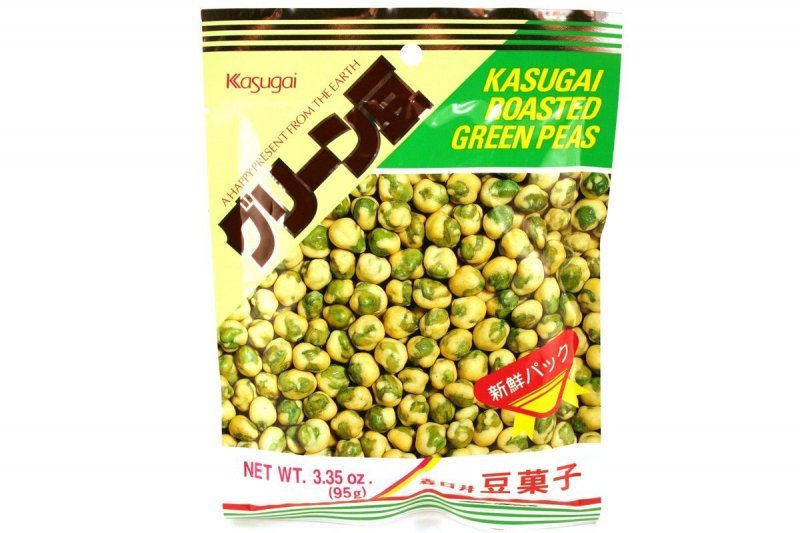
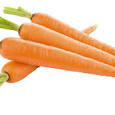
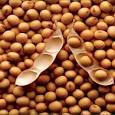
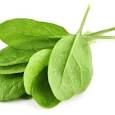
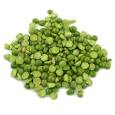
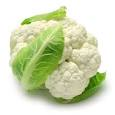
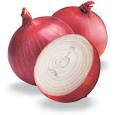
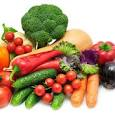
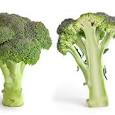
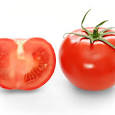
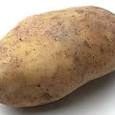
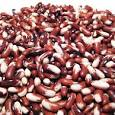
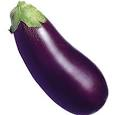

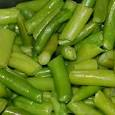
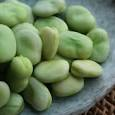














Add your comment